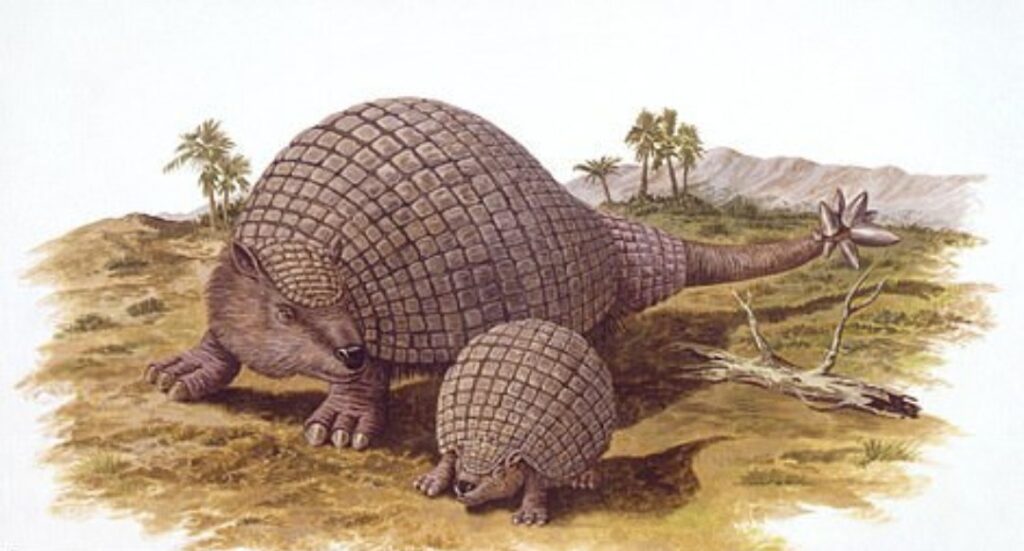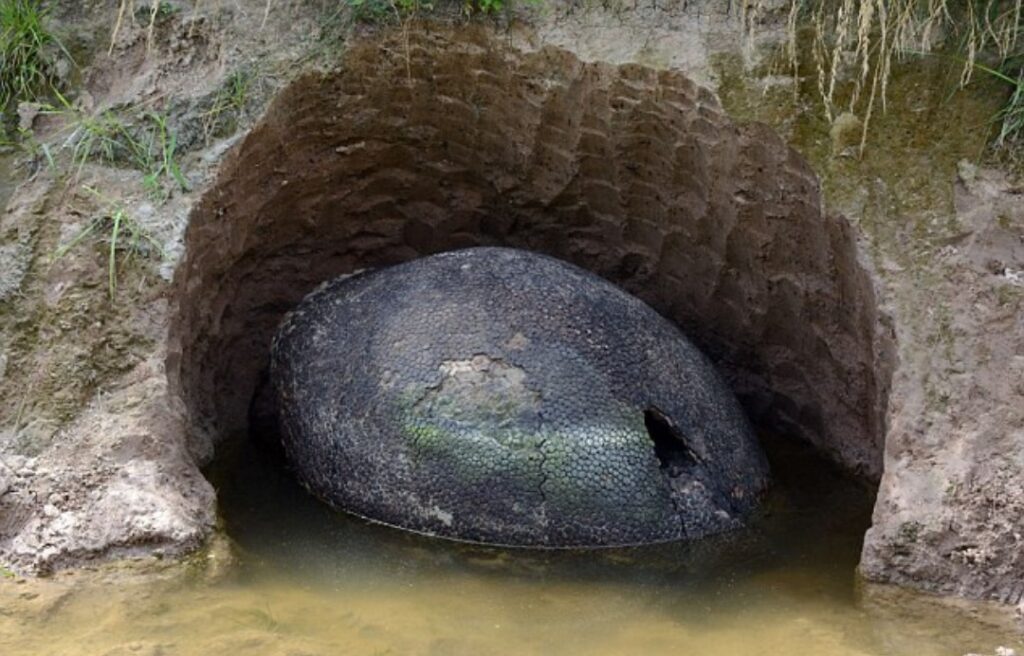A recent discovery in Argentina has provided a fascinating glimpse into the prehistoric past, as a farmer uncovered the fossilized remains of four giant armadillos, known as Glyptodonts, that roamed the Earth approximately 20,000 years ago. These ancient creatures, ancestors of modern armadillos, were a striking feature of the Pleistocene epoch, and this find adds to our understanding of their existence in South America.
Unexpected Find Near Buenos Aires
The discovery was made by Juan de Dios Sota, a local farmer, as he was herding his cattle near a dried riverbed close to Buenos Aires. Initially noticing two peculiar formations in the parched riverbed, Sota’s curiosity led to a significant paleontological excavation. Experts soon identified the unusual shapes as the fossilized shells of Glyptodonts, one of which was comparable in size to a Volkswagen Beetle.

Rare Find: Four Glyptodonts Together
What makes this discovery particularly remarkable is the number of fossils unearthed. Paleontologists uncovered not two but four Glyptodonts at the site. According to Pablo Messineo, one of the archaeologists leading the excavation, it is exceedingly rare to find multiple specimens together in such a well-preserved state. The group, consisting of two adults and two juveniles, appears to have been traveling in the same direction when they met their end.

The Mighty Glyptodonts
Glyptodonts were extraordinary creatures that thrived in North and South America during the Ice Age. These early relatives of armadillos were well-armored, with their massive turtle-like shells composed of interlocking bony plates. Measuring up to 5 feet in length and 2 inches in thickness, their shells provided formidable protection. Additionally, they were equipped with a club-like tail, often adorned with spikes, which they likely used for defense or combat.

Historical Context and Prior Discoveries
Argentina has long been a hotspot for Glyptodont discoveries. In 2015, another farmer, Jose Antonio Nievas, found a similar fossilized shell measuring about 3 feet long. Experts, including Adrian Lister from London’s Natural History Museum, have verified the authenticity of such finds, explaining that riverbank erosion often exposes these ancient remains.
Scientific Significance and Next Steps
The recently discovered fossils are now the focus of further scientific research. Tests will be conducted to determine the age, sex, and possible cause of death of the Glyptodonts. Such findings not only excite paleontologists but also shed light on the diverse and fascinating prehistoric fauna that once inhabited South America.
This extraordinary discovery highlights the rich paleontological heritage of Argentina and serves as a reminder of the vast and varied history etched beneath its landscape.


